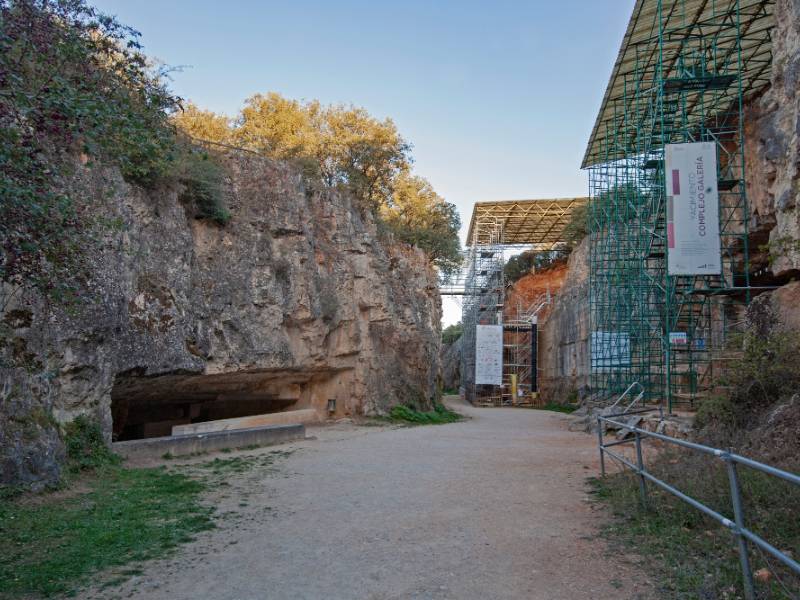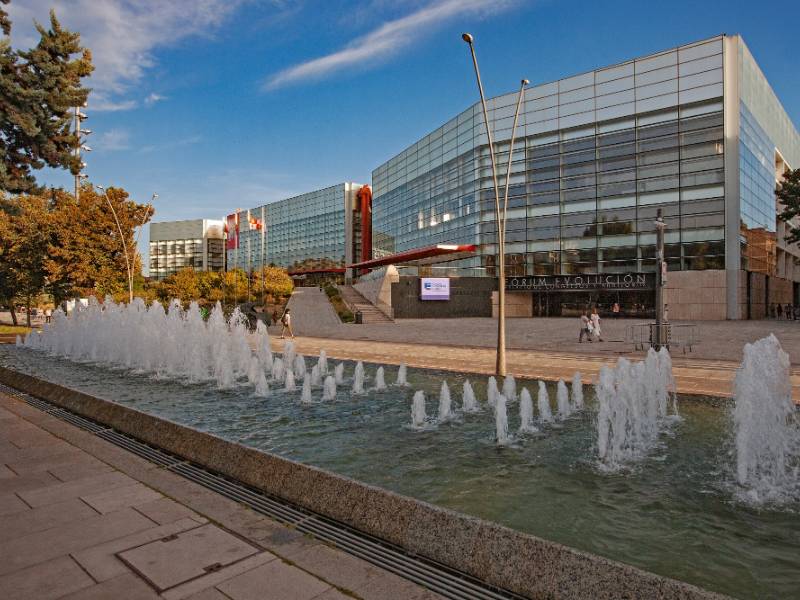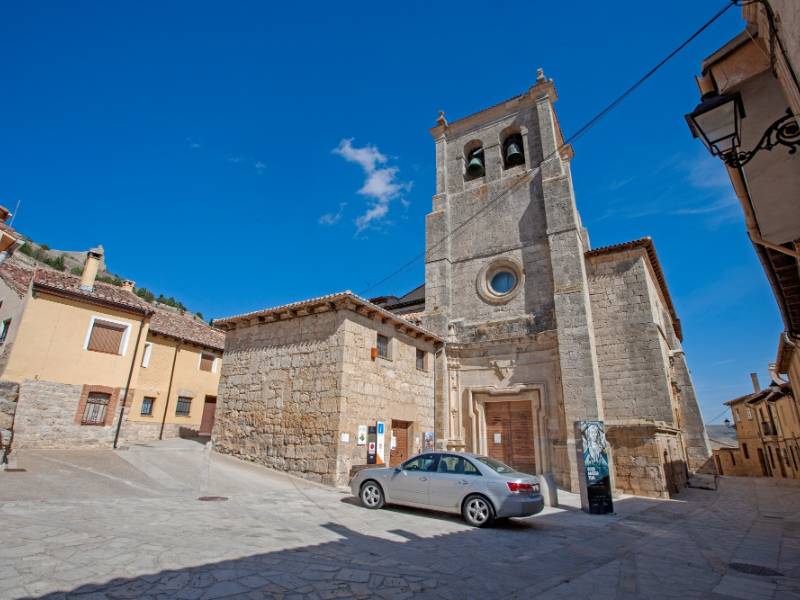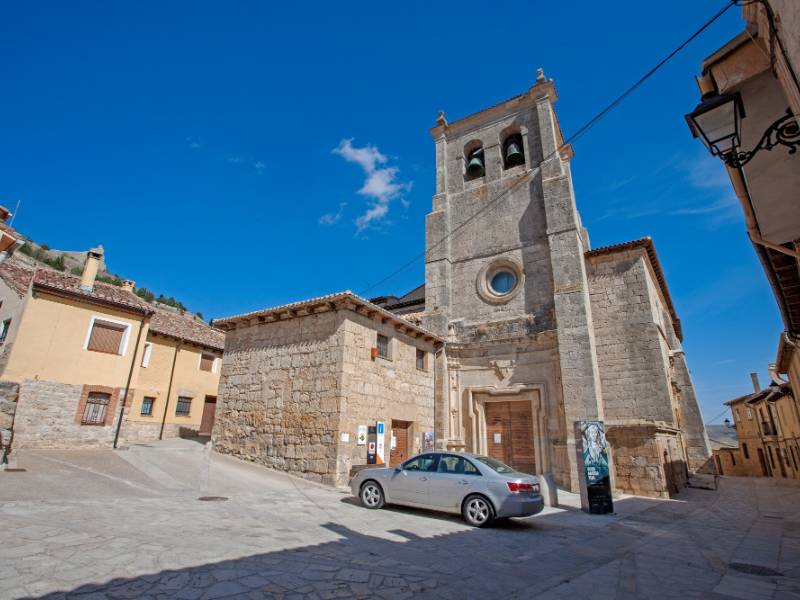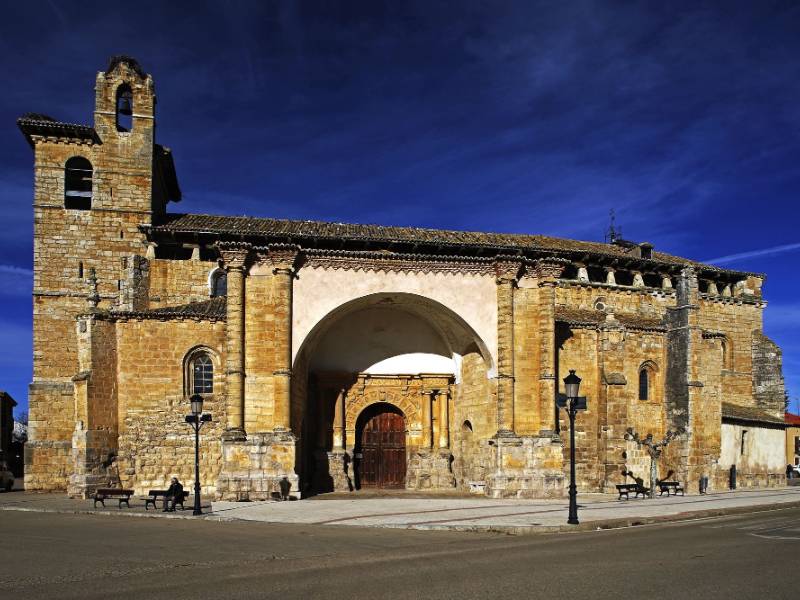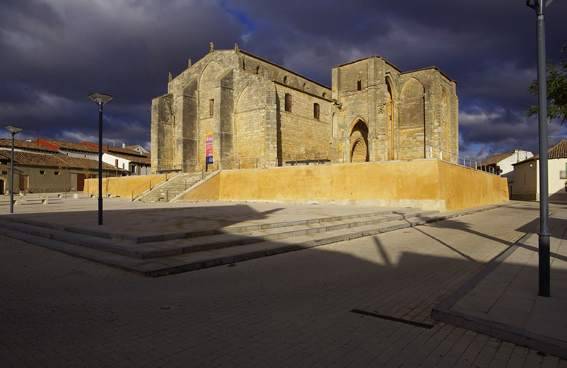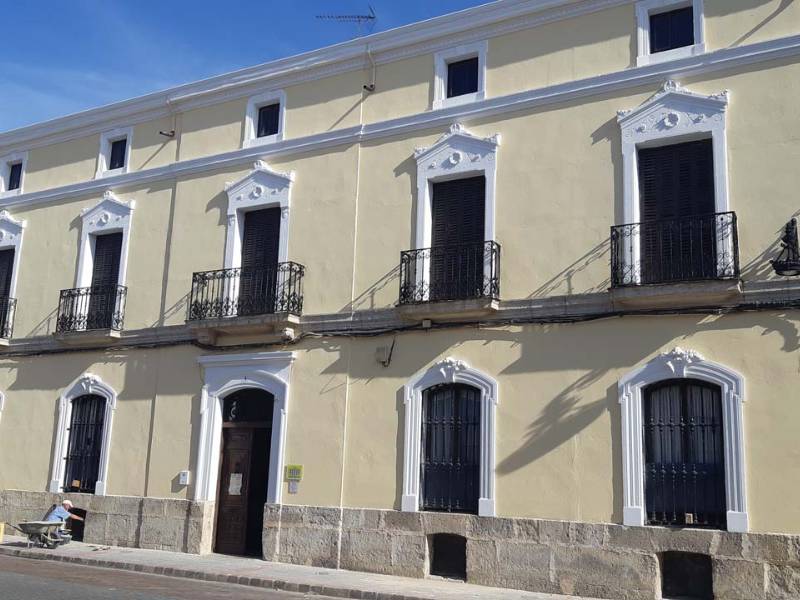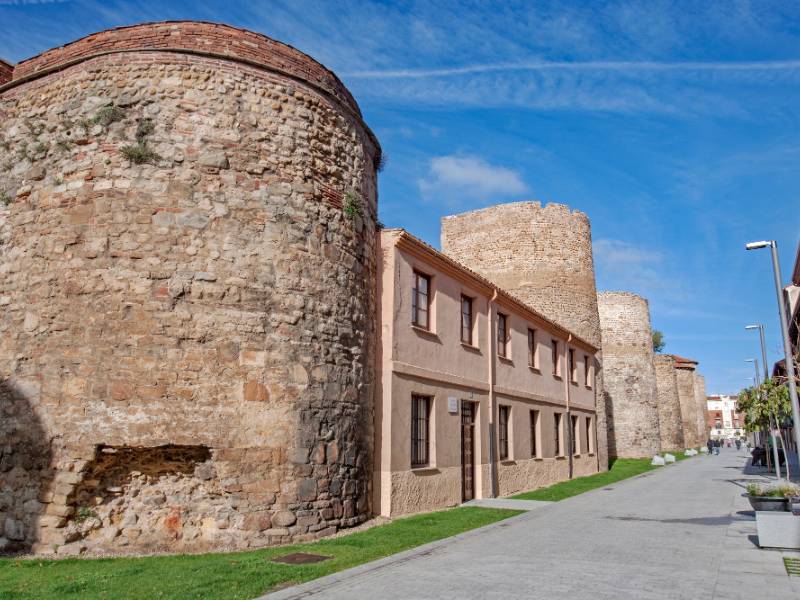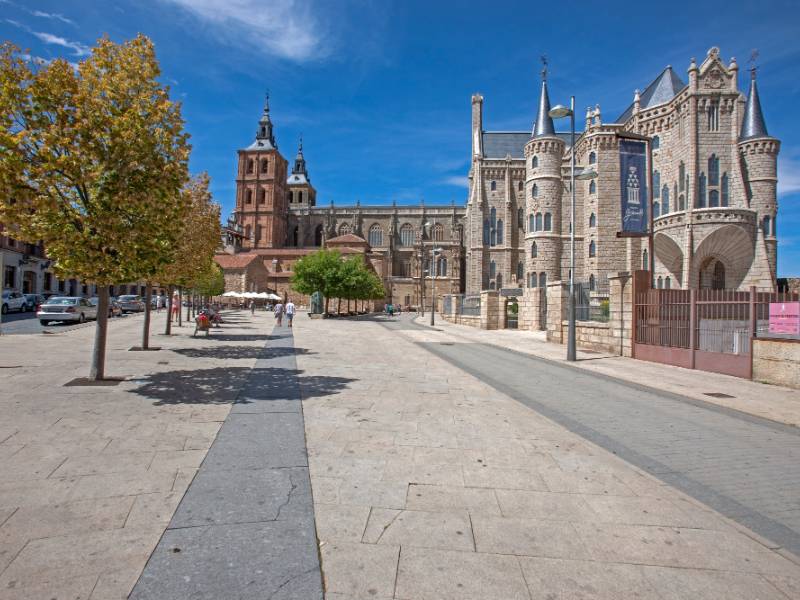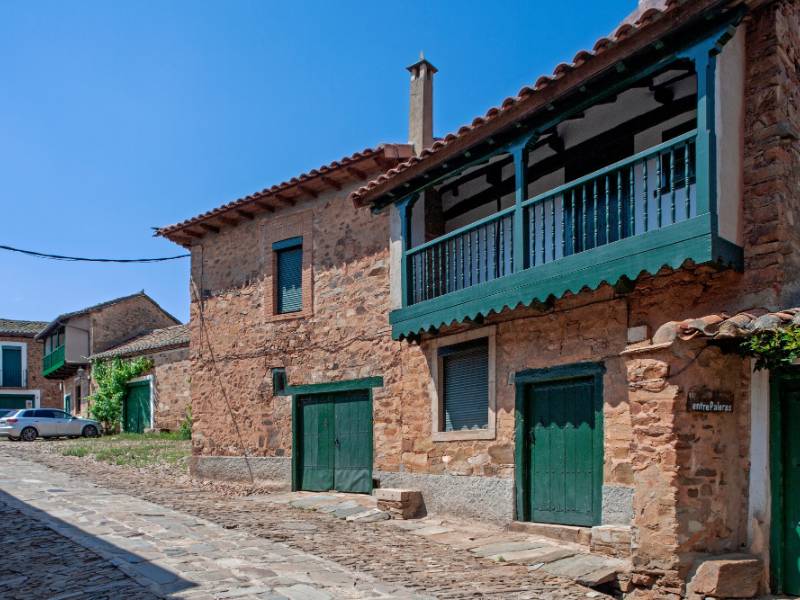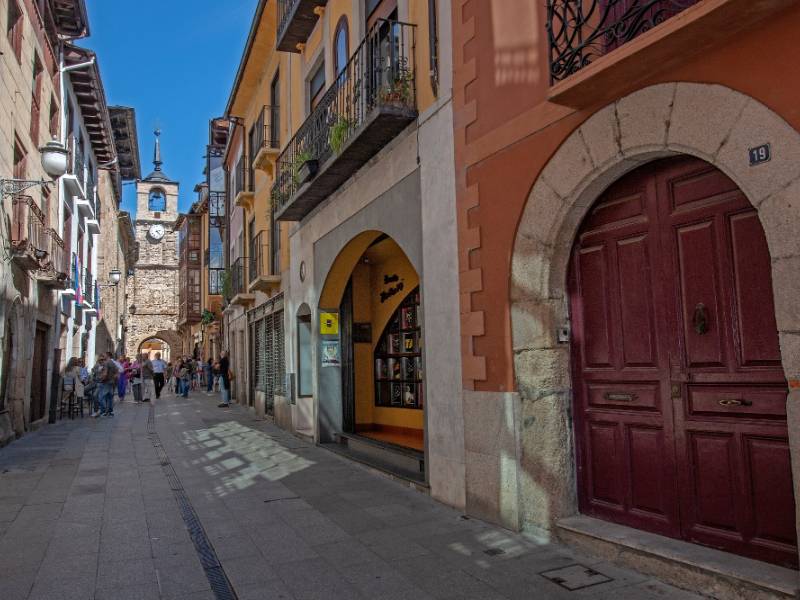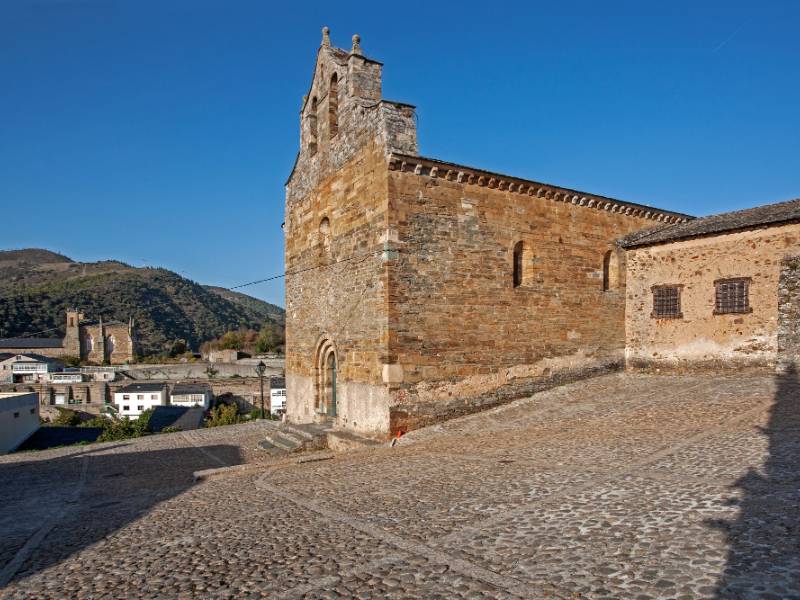Route 7 Camino de Santiago - Castrillo de los Polvazares
- Previous
- Following
Castrillo de los Polvazares is one of the most beautiful villages in the León Maragatería region. The village, with its cobbled streets and noble houses, has been declared a Historic and Artistic Site and preserves all its vernacular architecture. The red stone and clay of its house fronts are in contrast with the lively colours of the doors and windows: blue, green and white. The Calle Real is the backbone and main street of the village.
It is commonly regarded as the most beautiful example of vernacular architecture in the Maragatería region. It was formerly inhabited by carriers, who made their living by transporting goods from the Meseta to Northern Spain, and vice versa. Their horse-drawn carts used to carry wheat and other cereals to Galicia and Cantabria, where they purchased fish to be sold around Castilla.
Reference to content
What to see?
 Aedes AugustiMore information
Aedes AugustiMore informationTemple intended for the imperial cult and dedicated to the memory of Emperor Augustus. It is a Roman concrete building with marble floor and double colored geometric motifs, located on a hill in the old...
 Minor Hot SpringsMore information
Minor Hot SpringsMore informationPublic building intended for the bathroom, where users followed a pre-established itinerary through a series of rooms with different temperatures: frigidarium (cold bath), tepidarium (warm room) and caldarium...
 The Domus of the Bear and Birds MosaicMore information
The Domus of the Bear and Birds MosaicMore informationIn the vicinity of the forum and in one of the sunniest areas of the city, the remains of a house that must have belonged to a family of a certain economic level are preserved, as seems to indicate the...
 The Forum (South Portico)More information
The Forum (South Portico)More informationThe Astúrica forum is located in the highest area of the city and is made up of a double colonnaded portico that surrounds it on its north, south and west sides. On the eastern flank stands the basilica,...
 The Pit CampMore information
The Pit CampMore informationOn the hill of the current town of Astorga has been located the so-called 'trench of the camp', a vestige of the defensive system of a Roman military camp founded in the Cantabrian Wars (29-19 BC) and...
 Cathedral of AstorgaMore information
Cathedral of AstorgaMore informationThis is one of the most representative buildings of the maragata capital, a noble, loyal and bimillennial town in the province of León, a crossroads and melting pot of cultures. It is part of the dioceses...
 Episcopal Palace / Palace of GaudiMore information
Episcopal Palace / Palace of GaudiMore informationProjected by Antonio Gaudí after the fire that destroyed the former Episcopal palace of Astorga in 1886, it is a neo-Gothic modernist building that brings together forms typical of a stately mansion, a...
 Roman sewersMore information
Roman sewersMore informationThe sanitation network of the old Astúrica is well known and presents a good state of conservation, in fact, some of its branches are still in use. The Roman Route includes the walk inside a sewer, belonging...
 The CuriaMore information
The CuriaMore informationRectangular room whose head ends in an apse. It is located occupying a central position in the portico that closes the forum from the west and, although it has traditionally been interpreted as a place...


